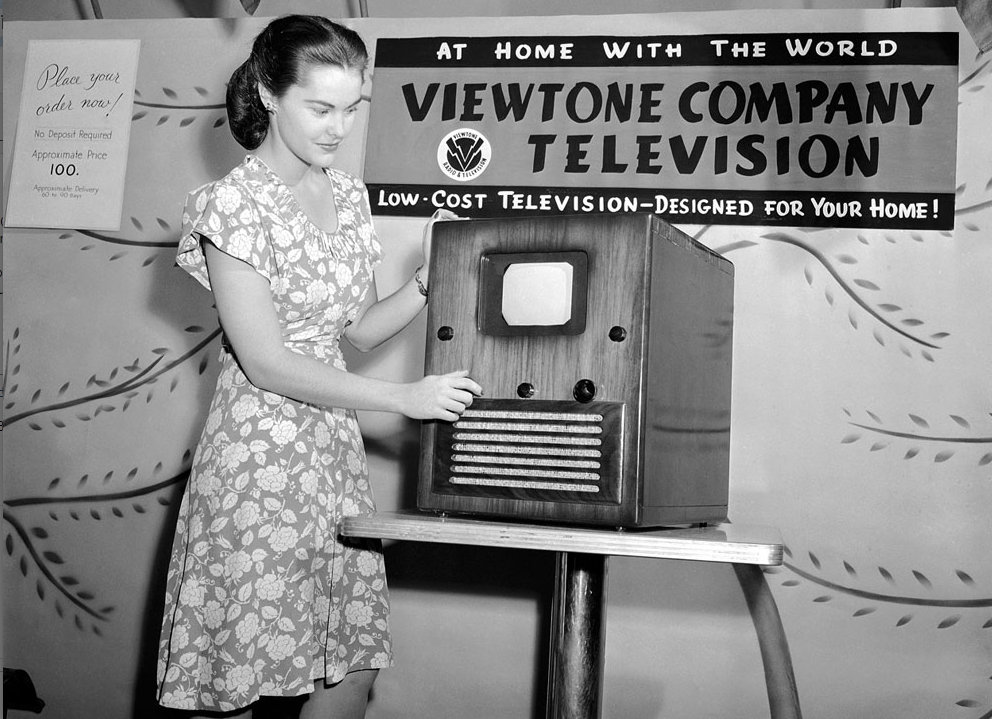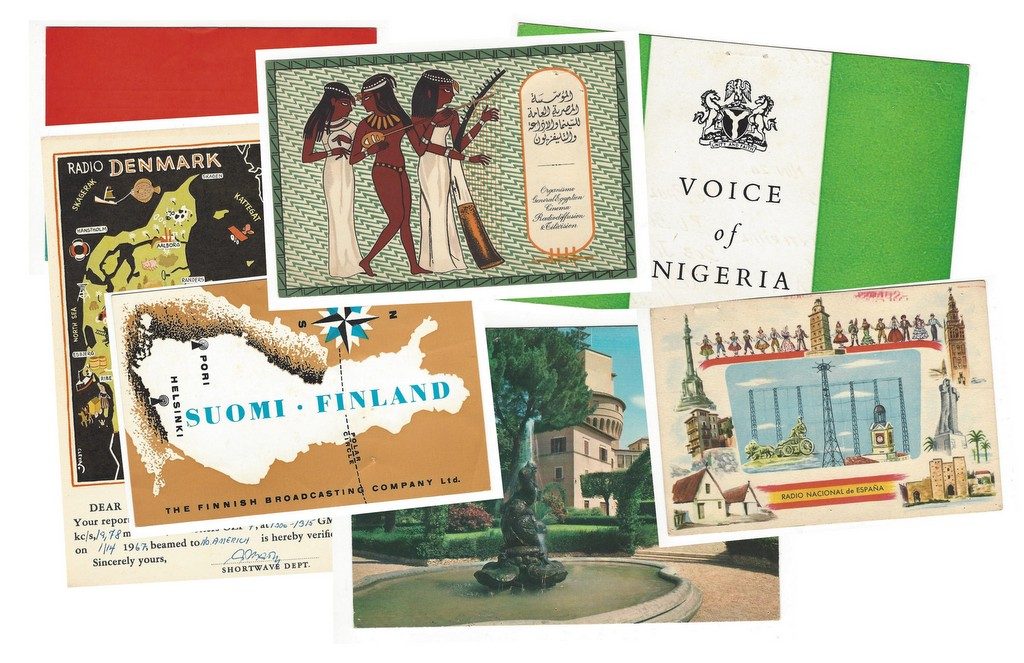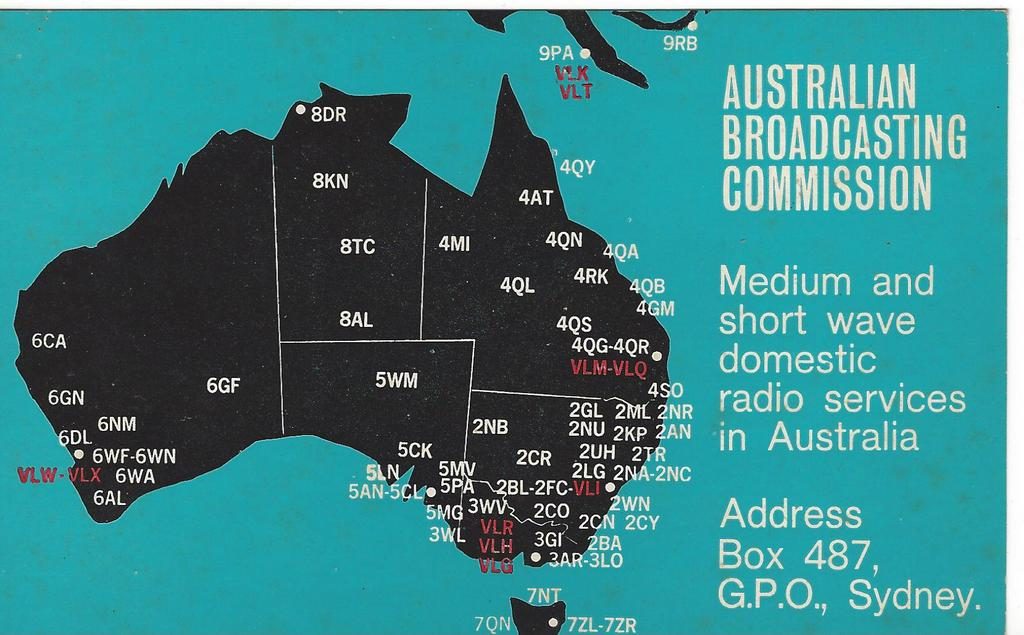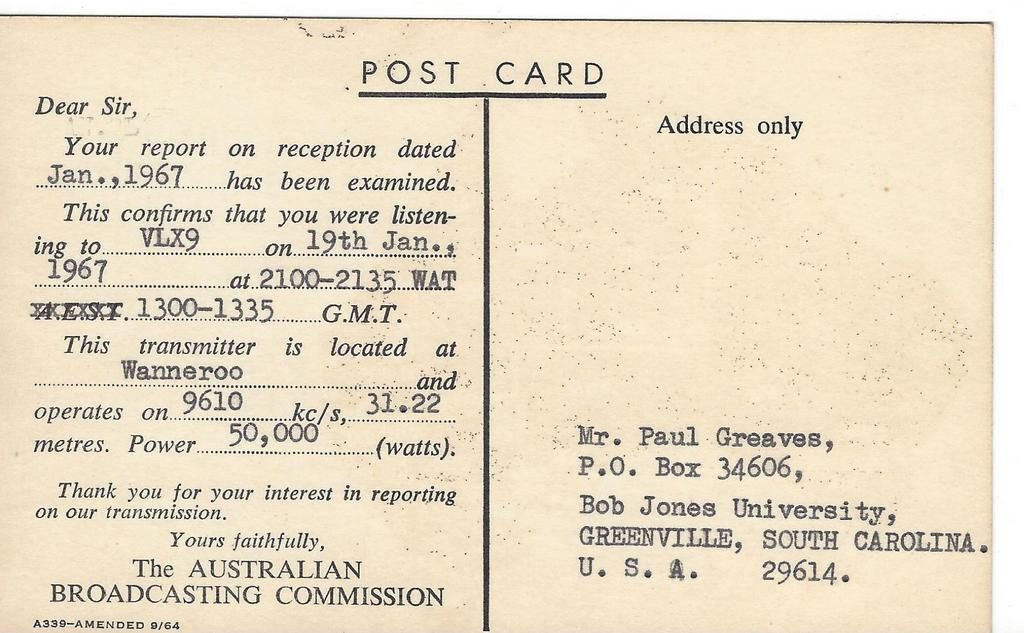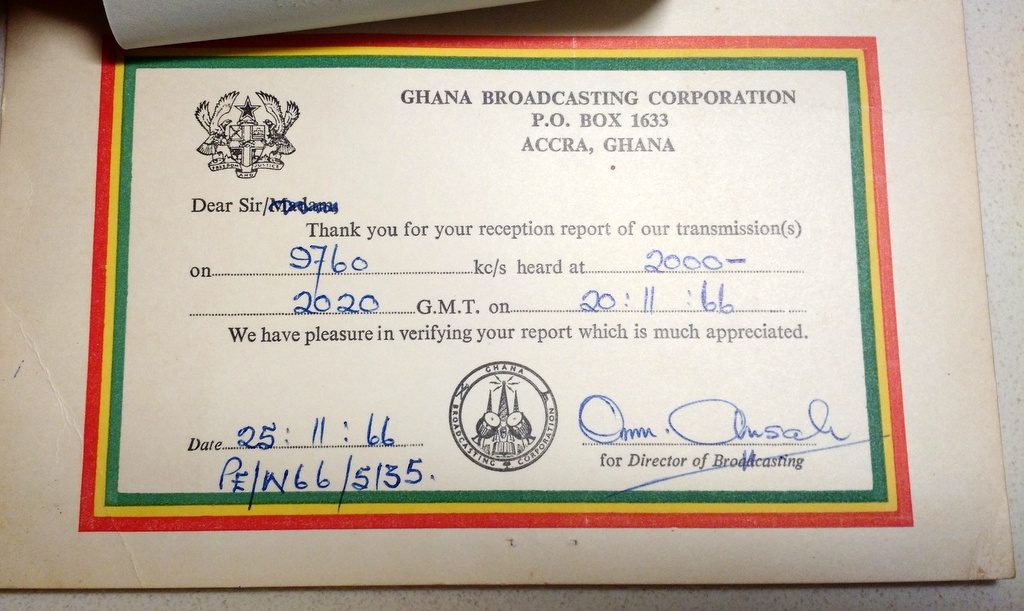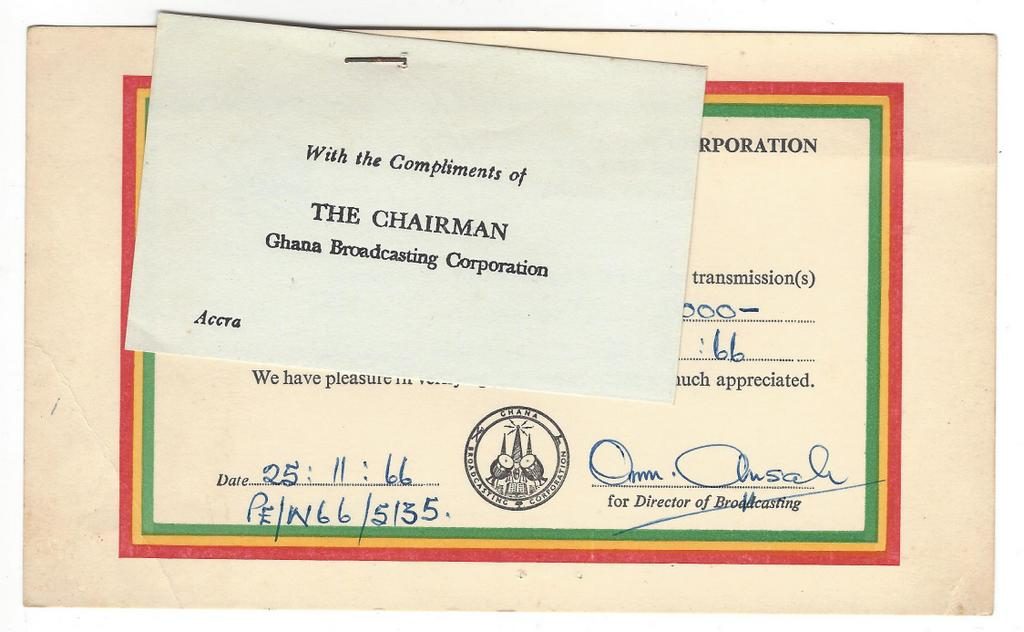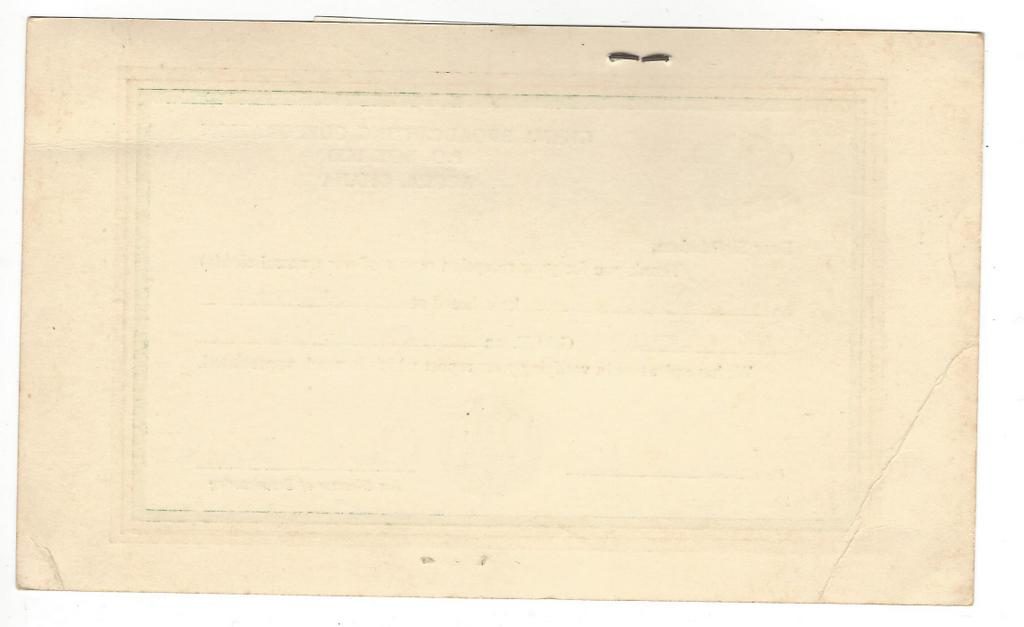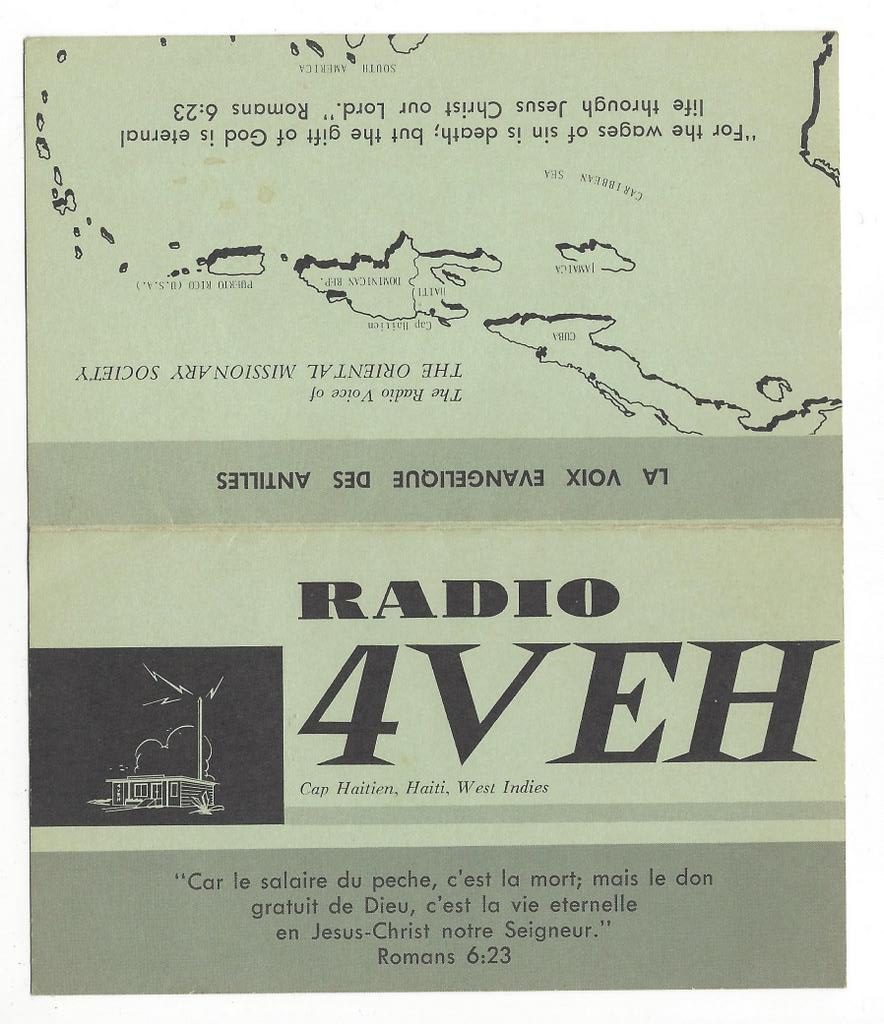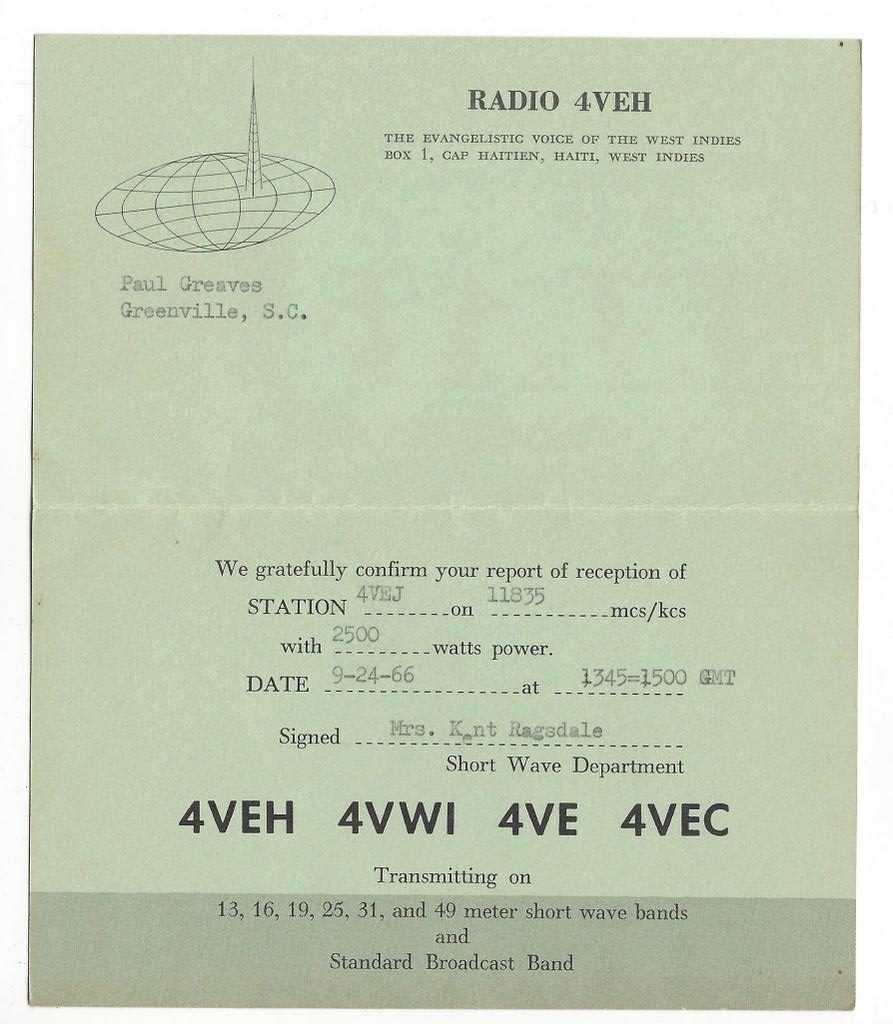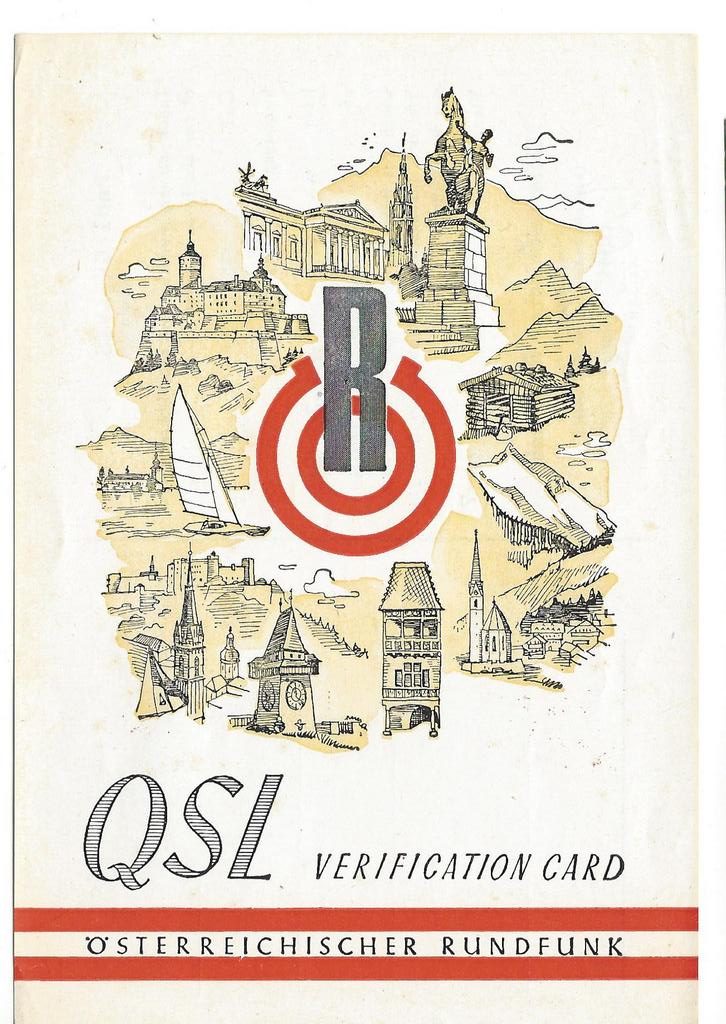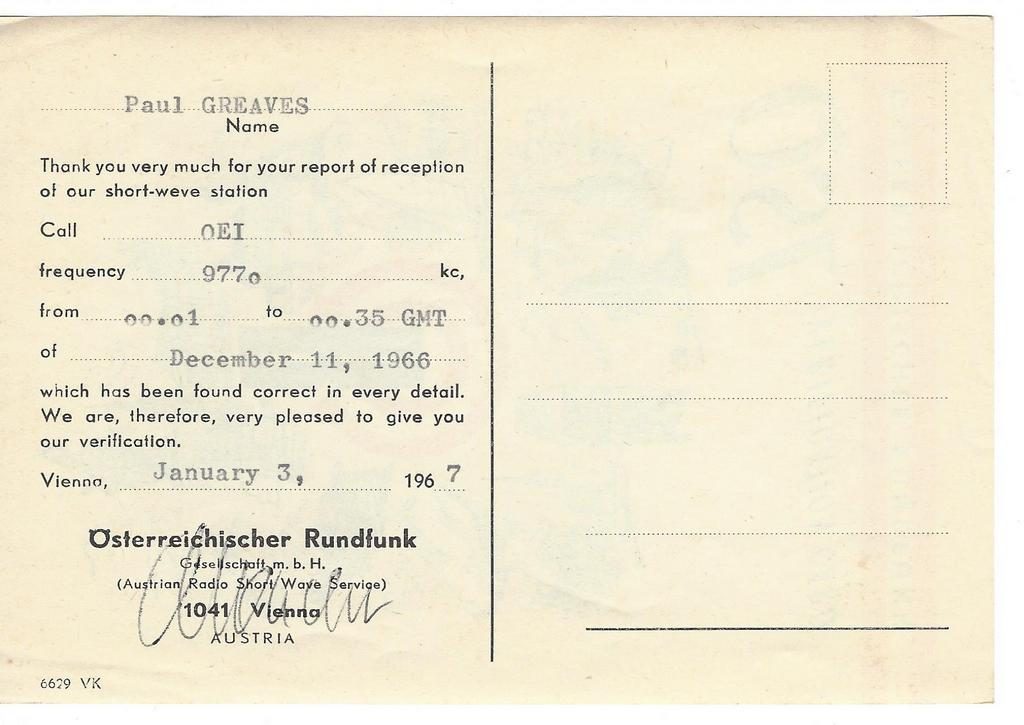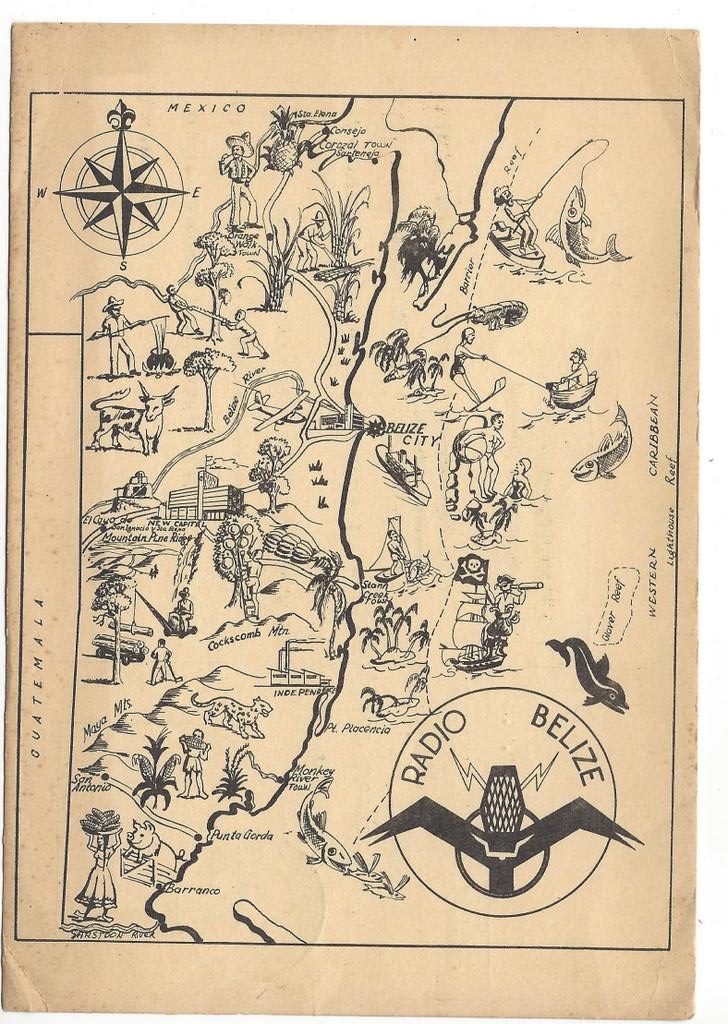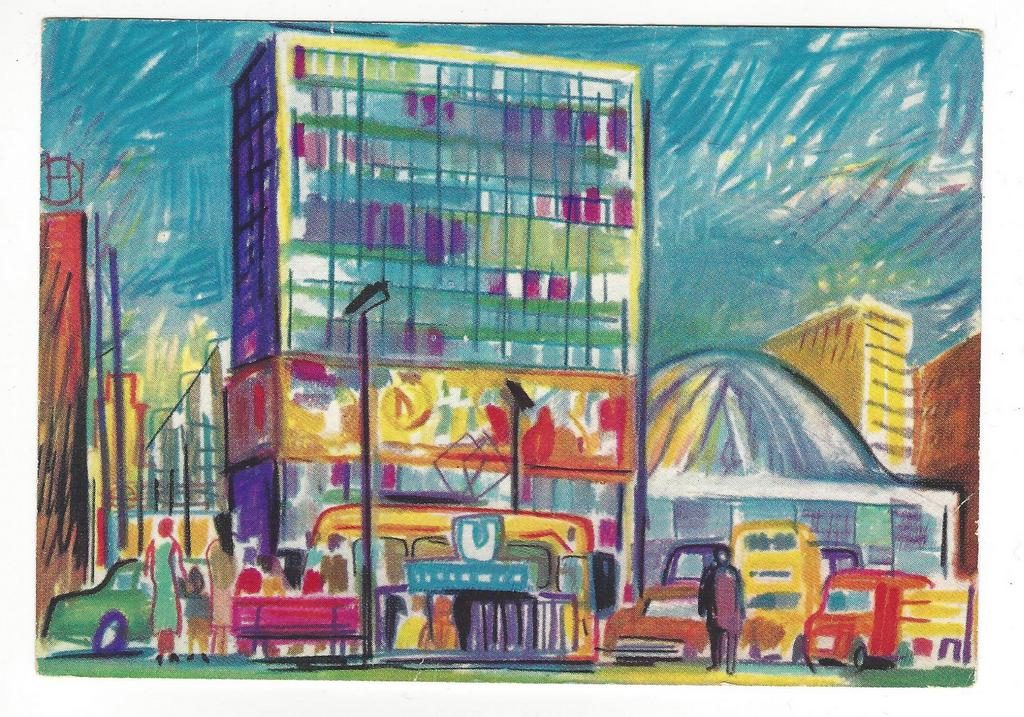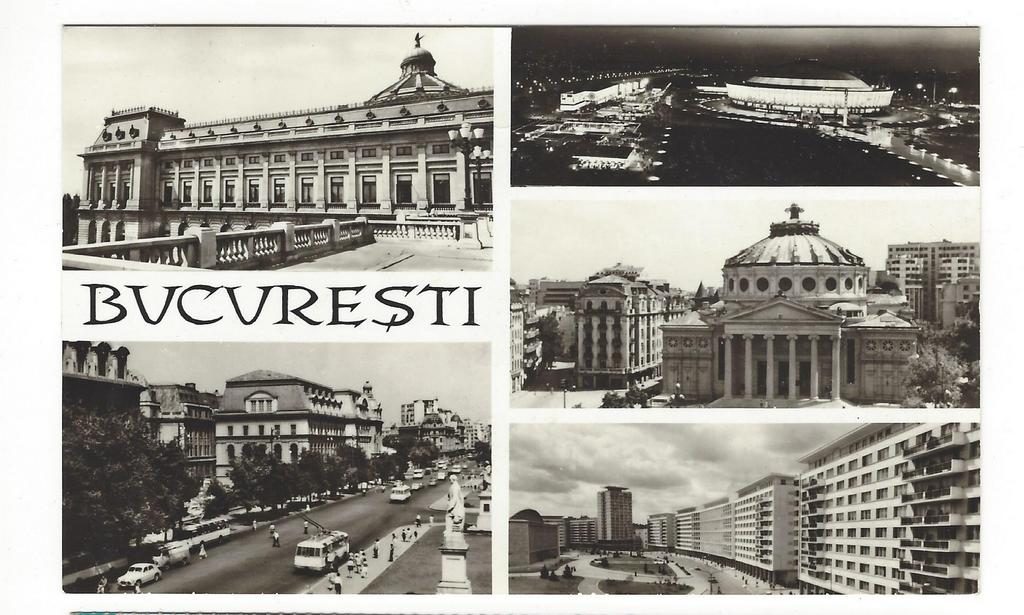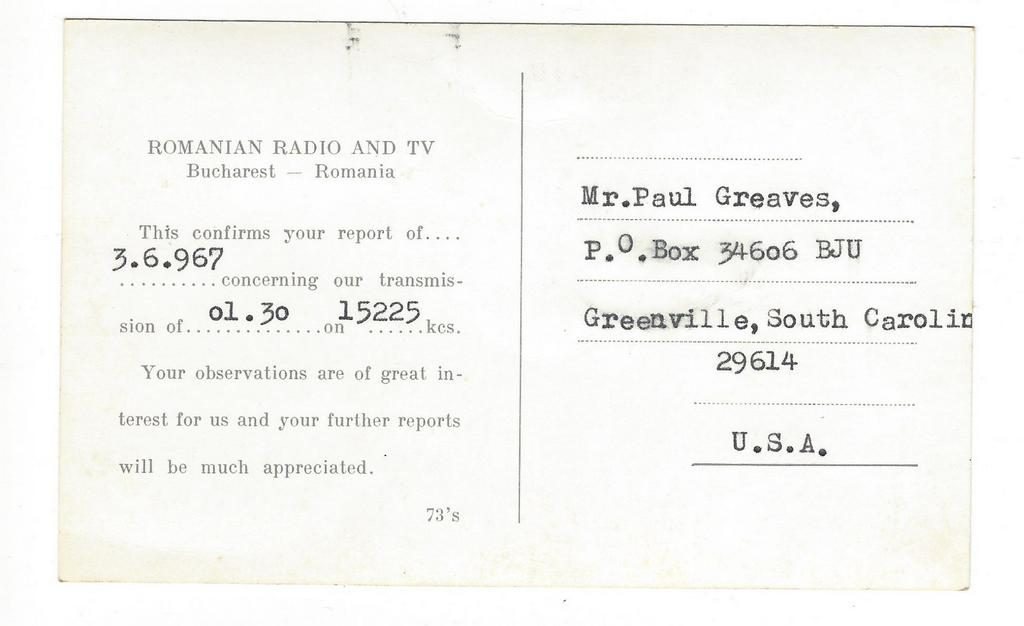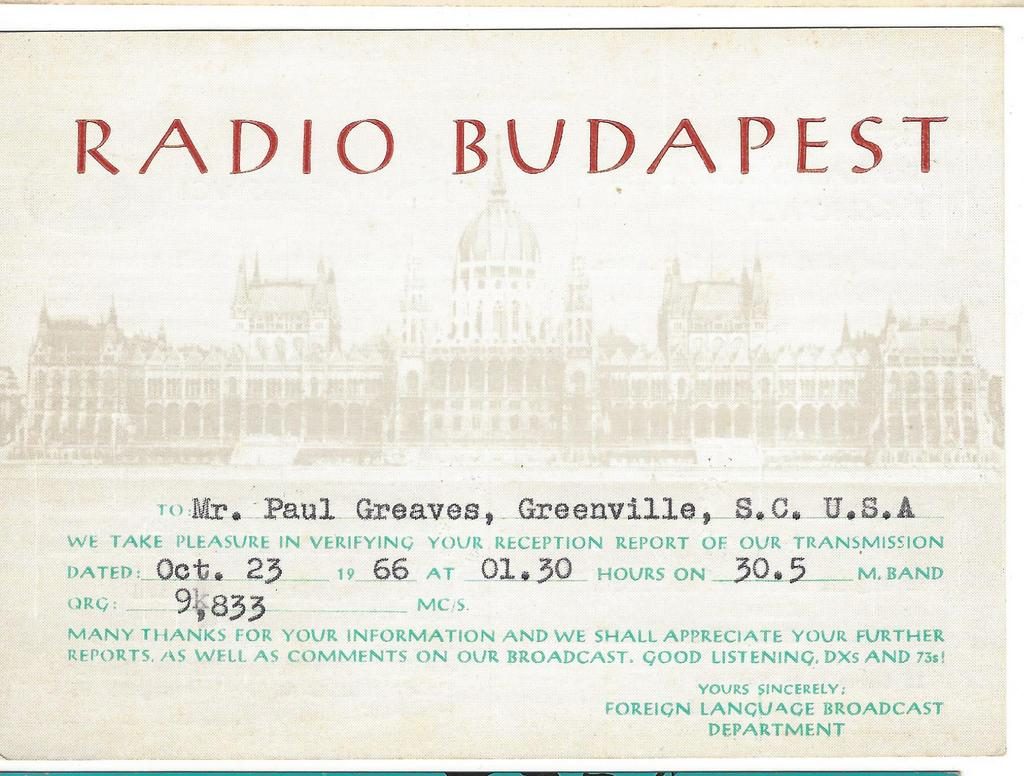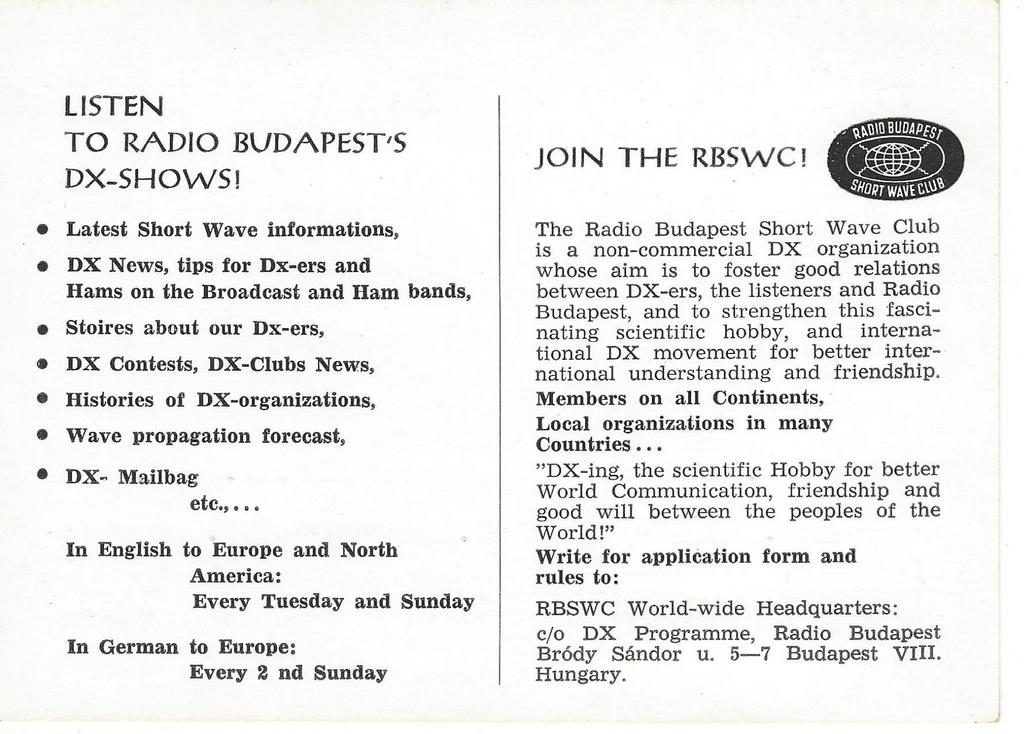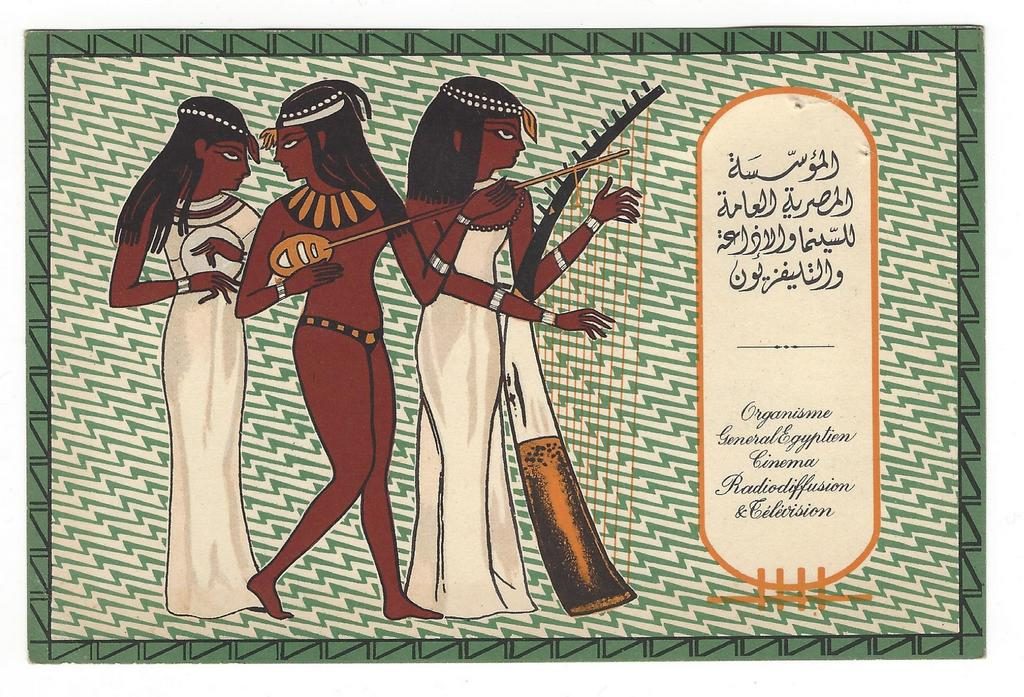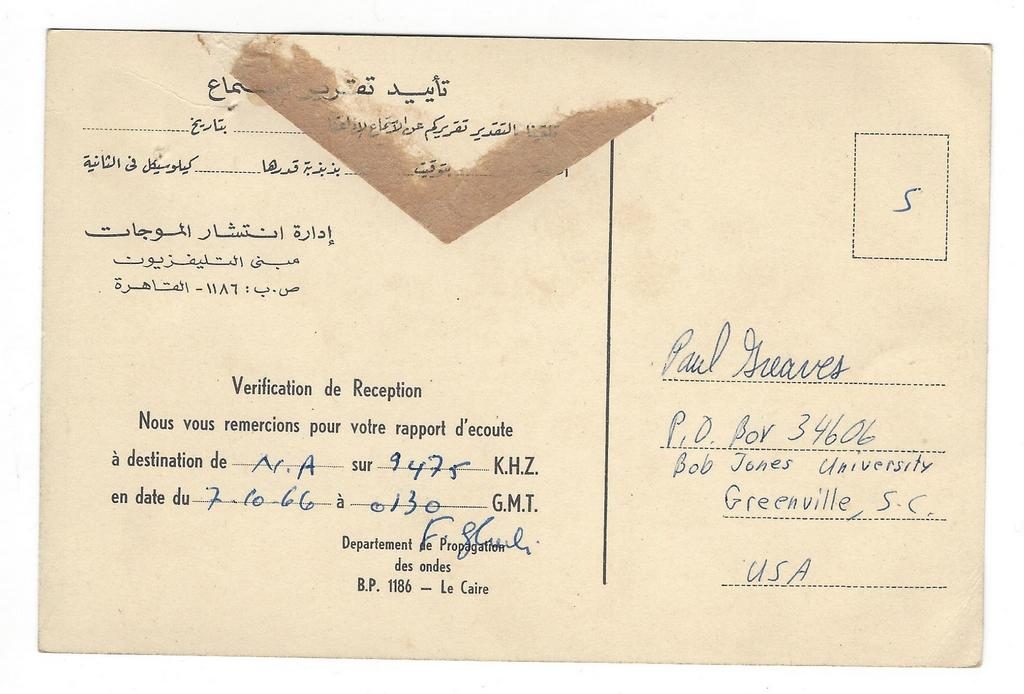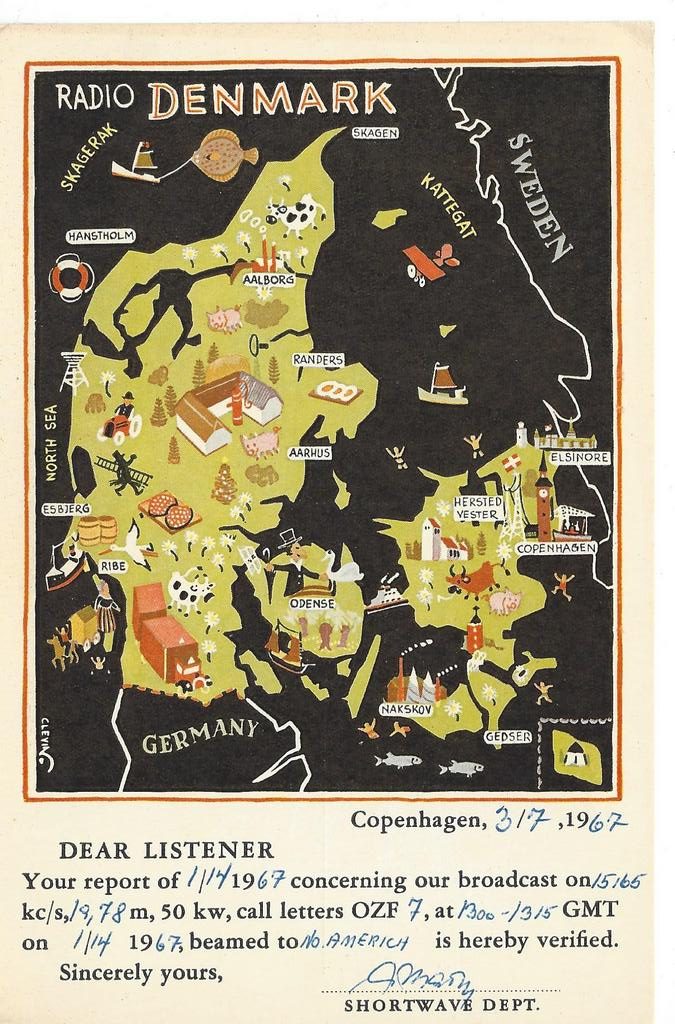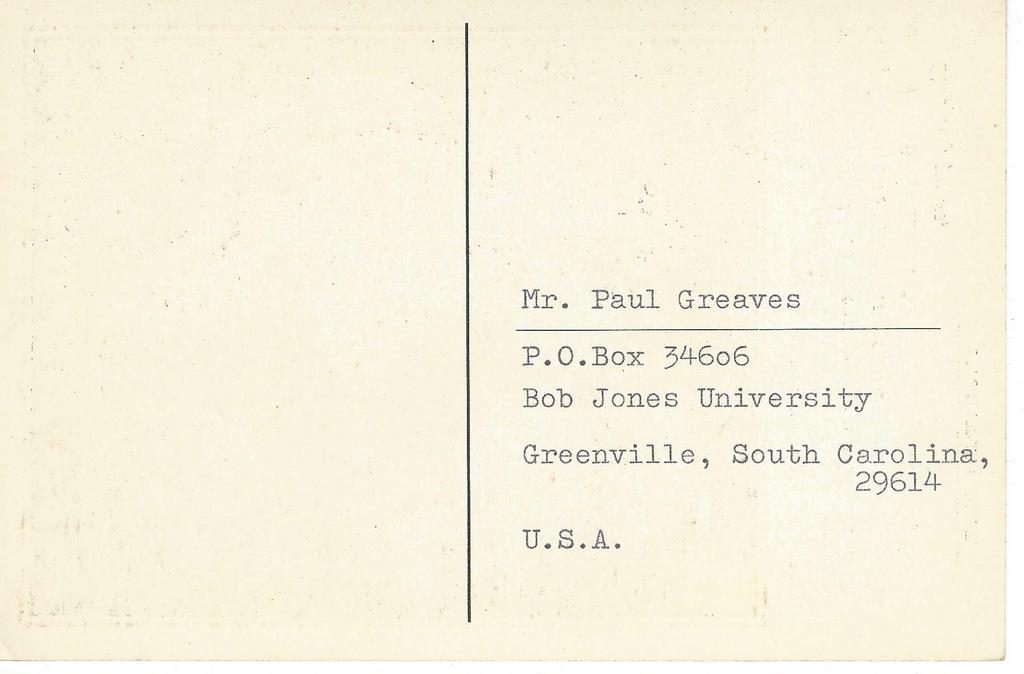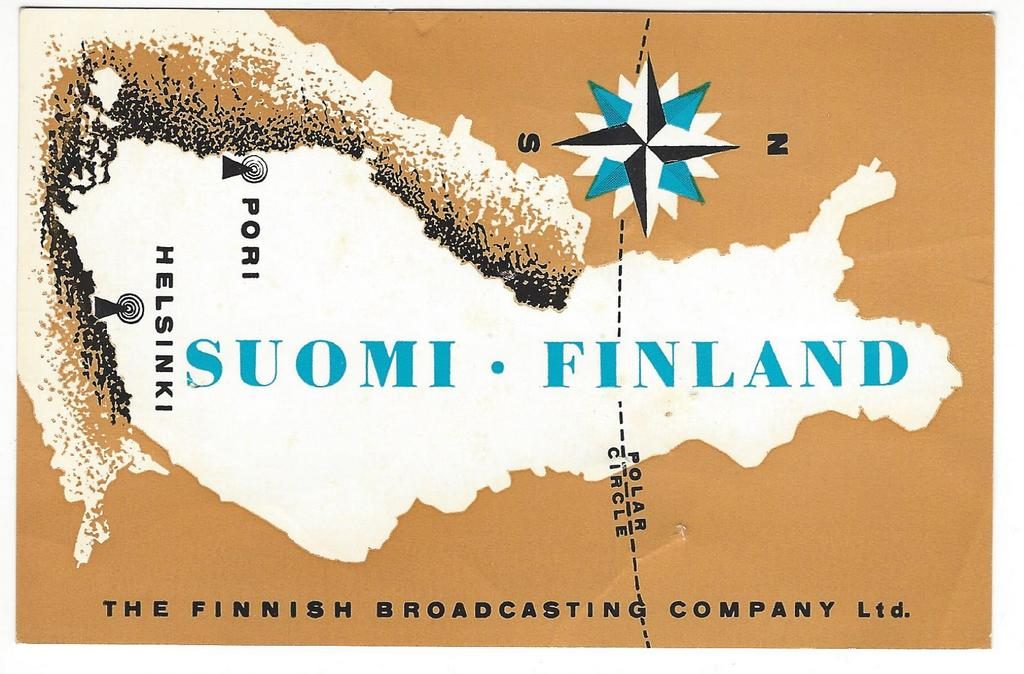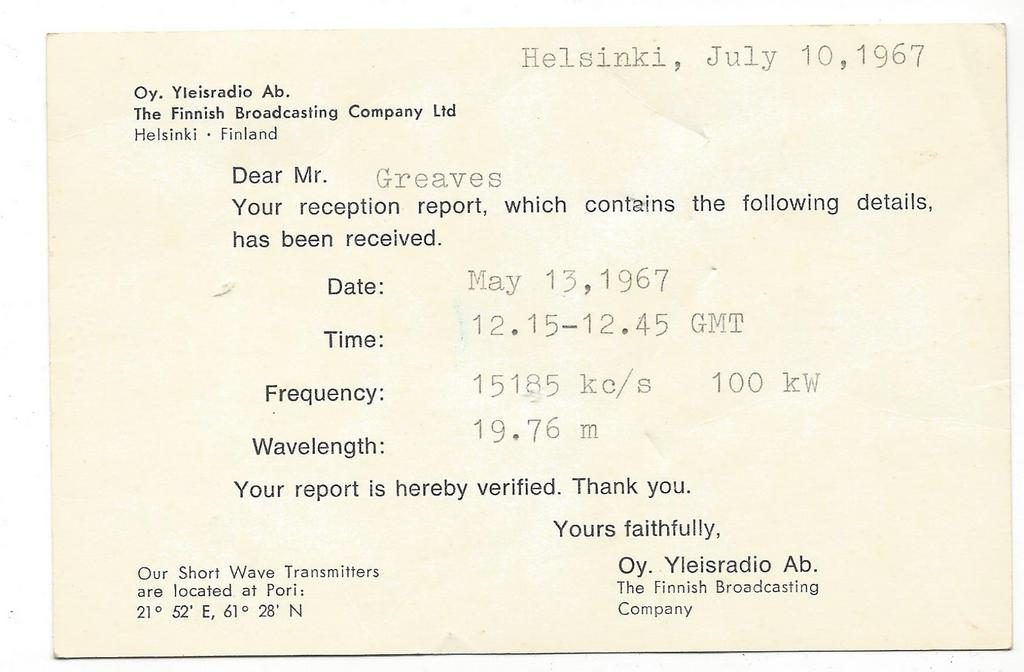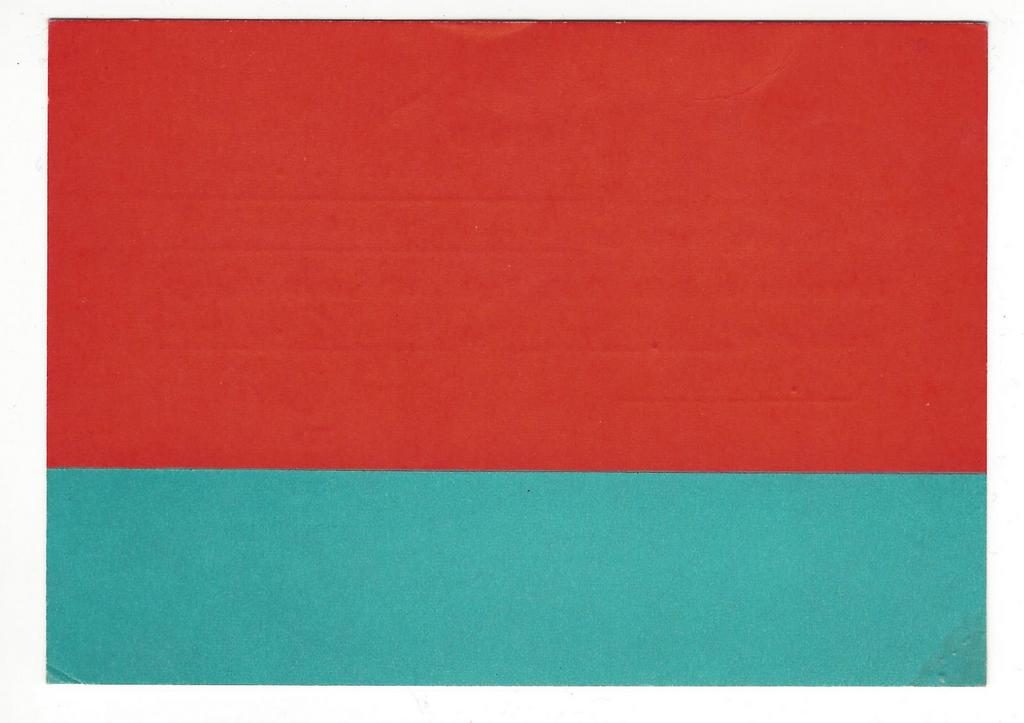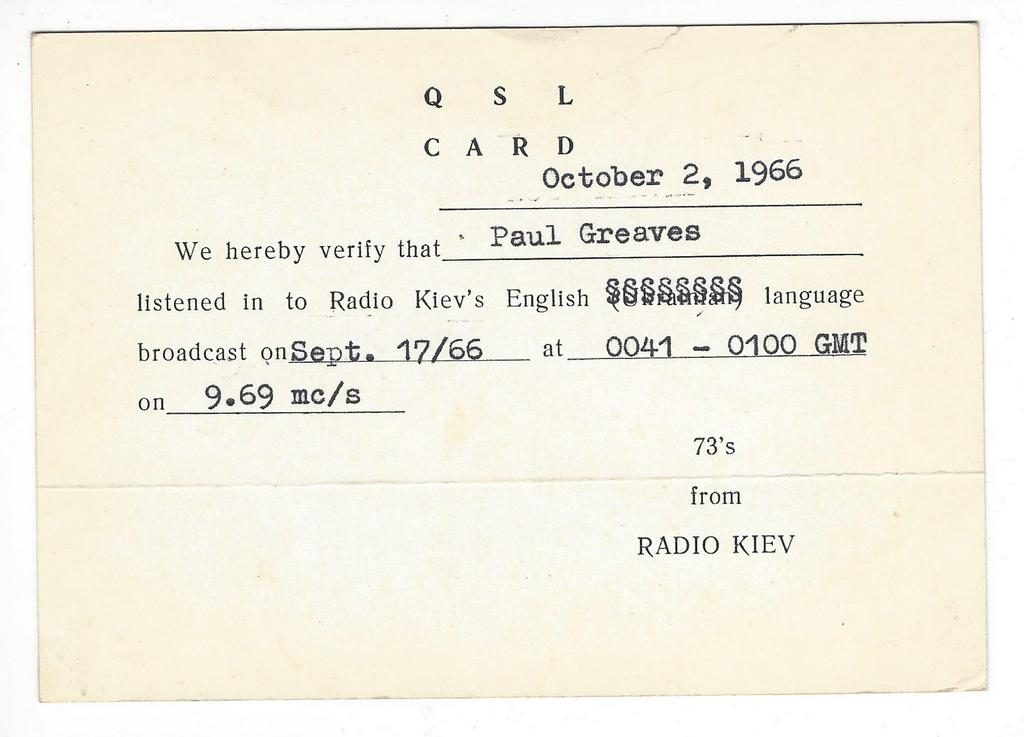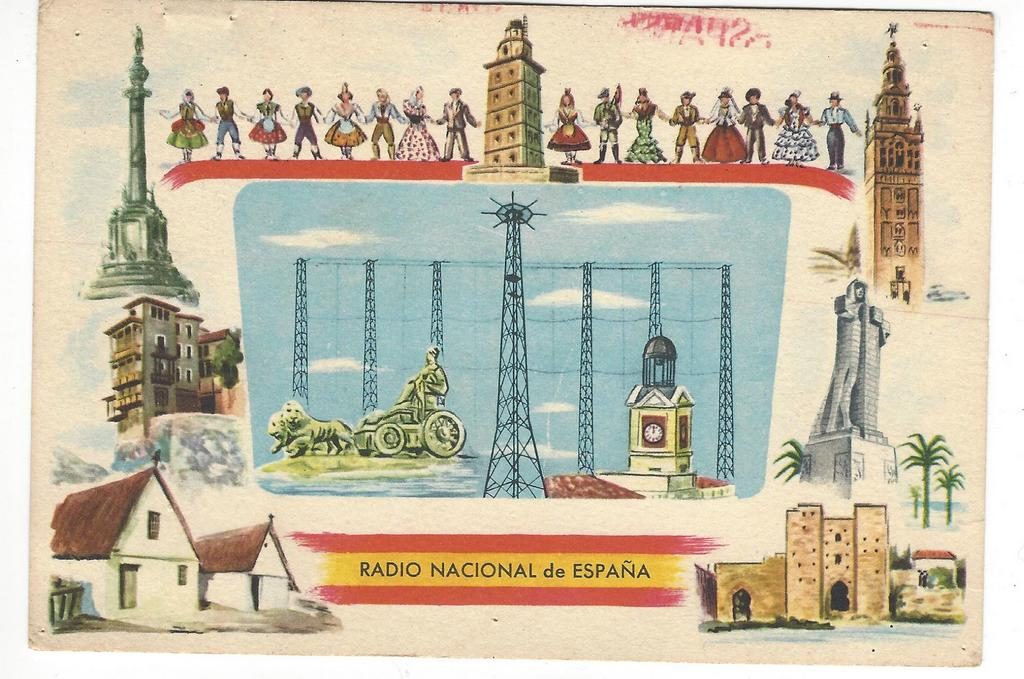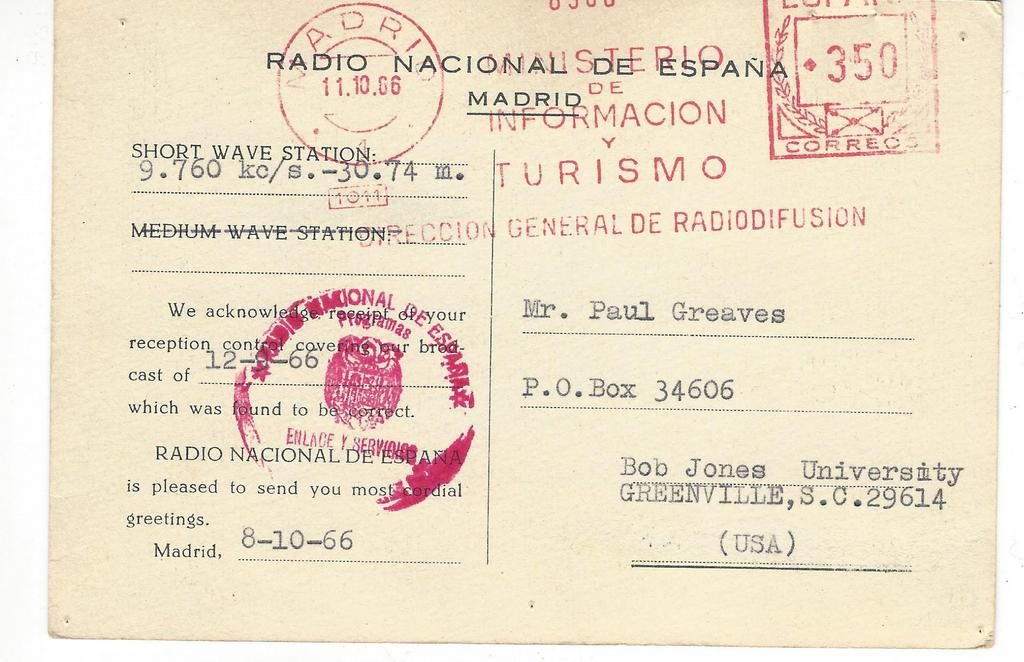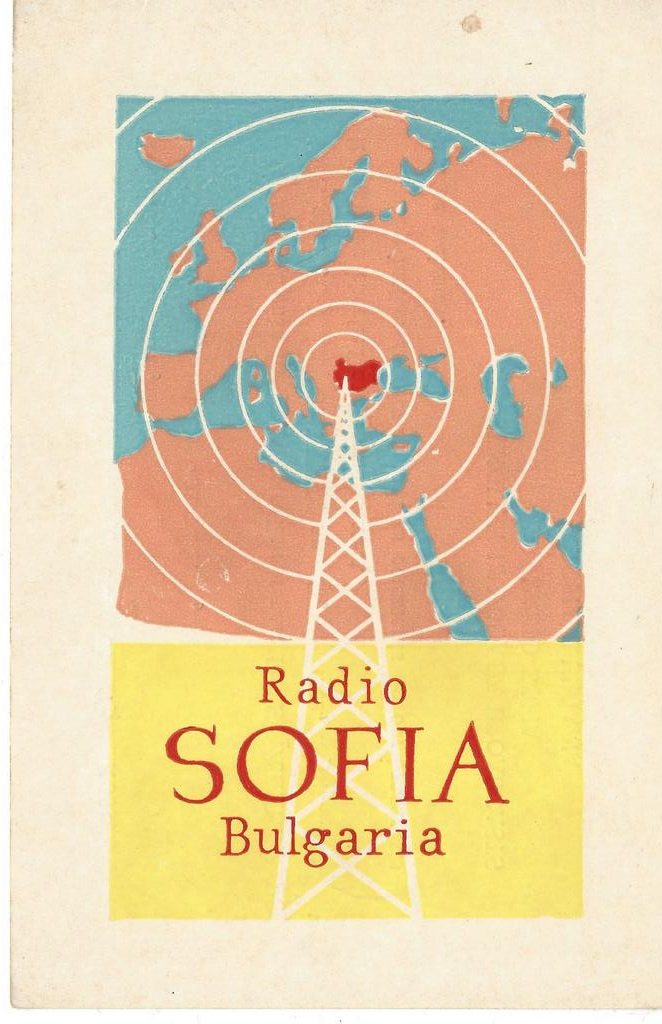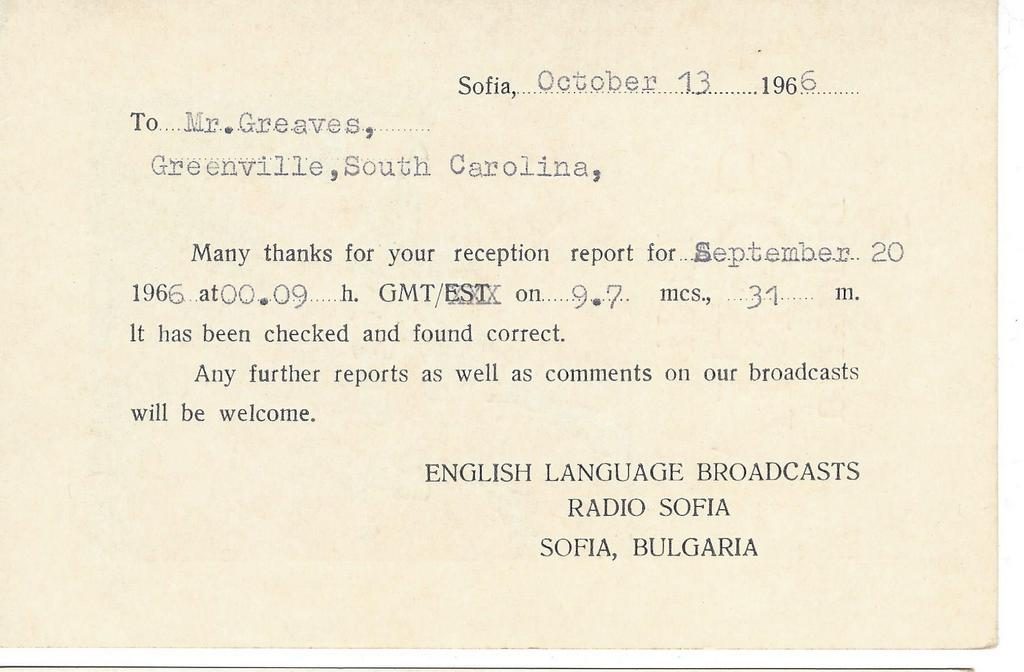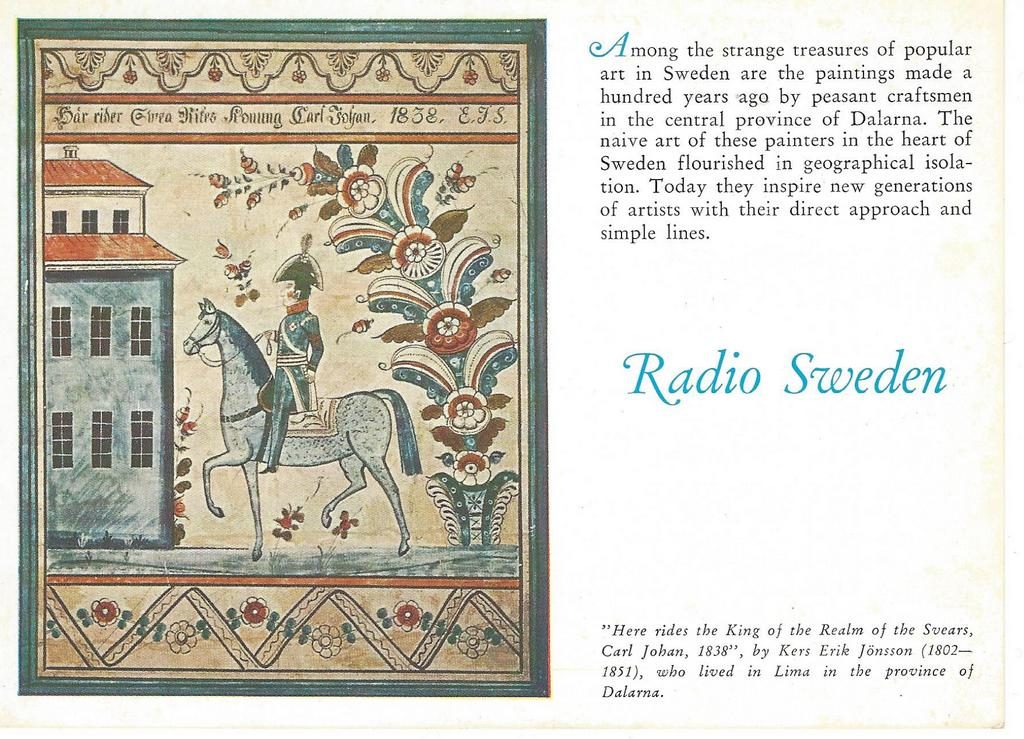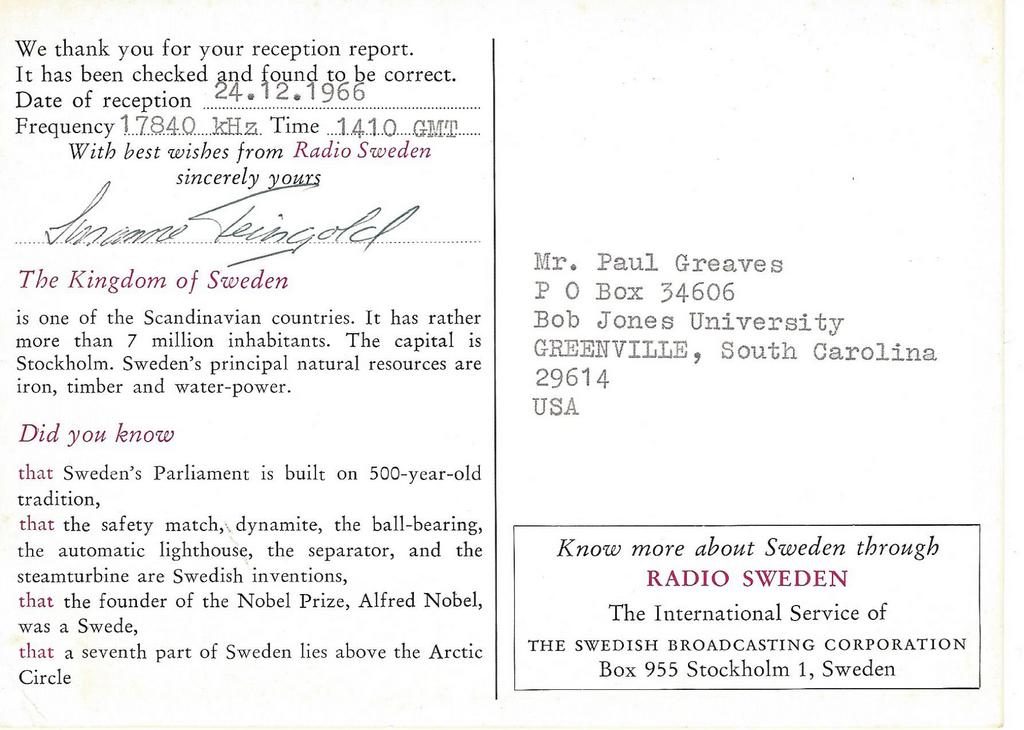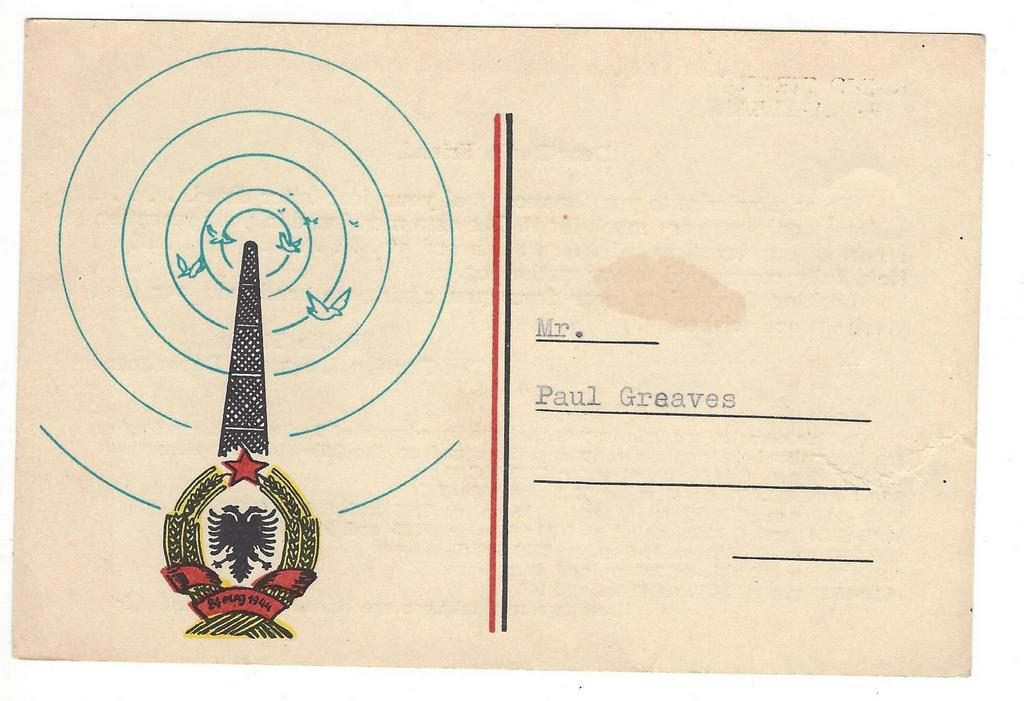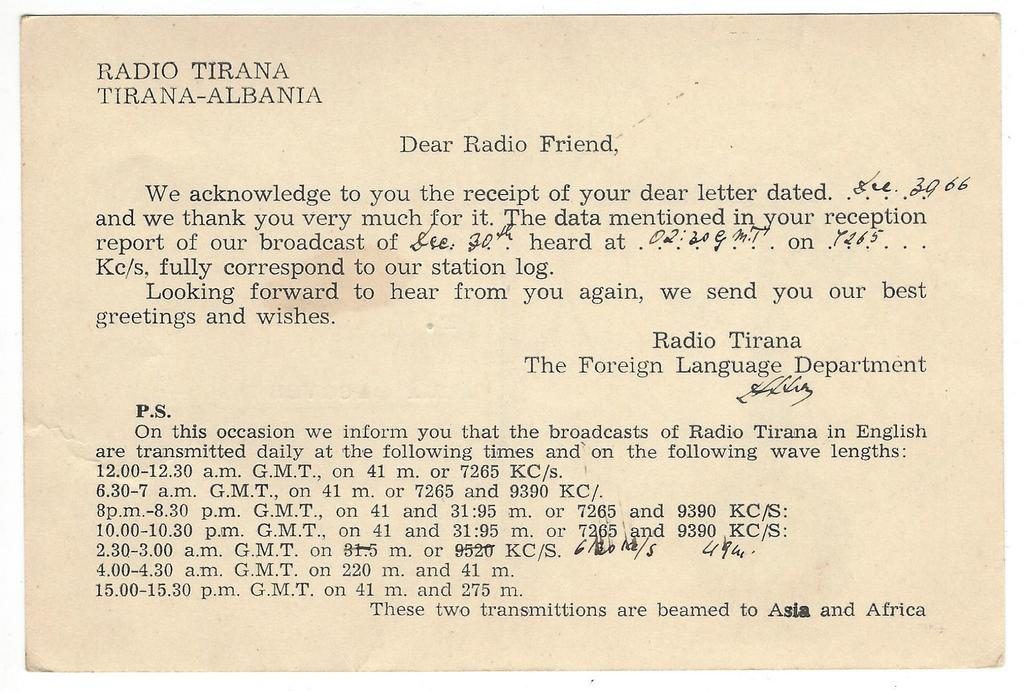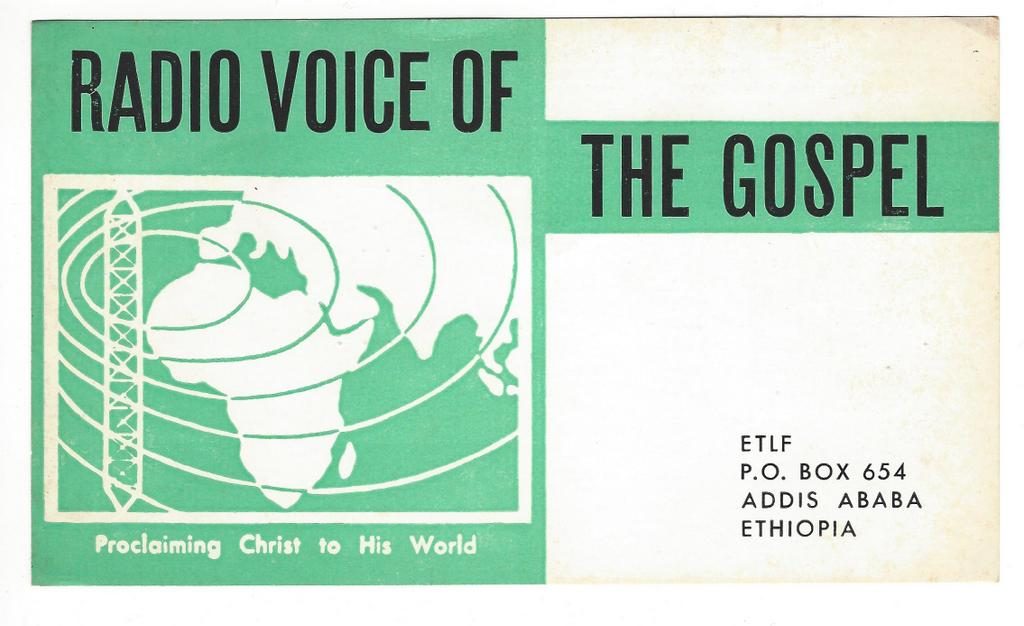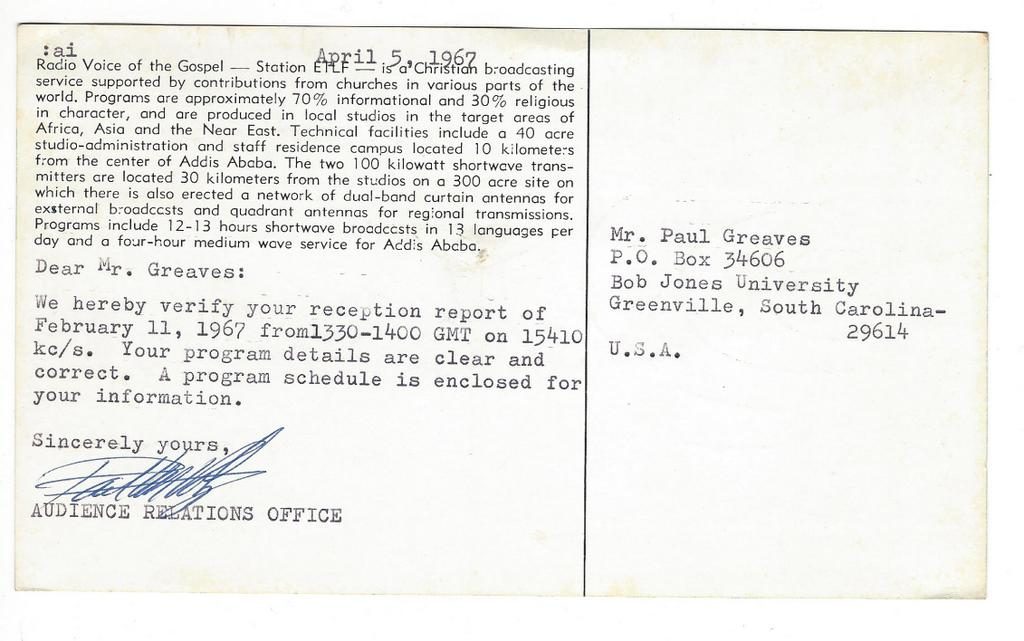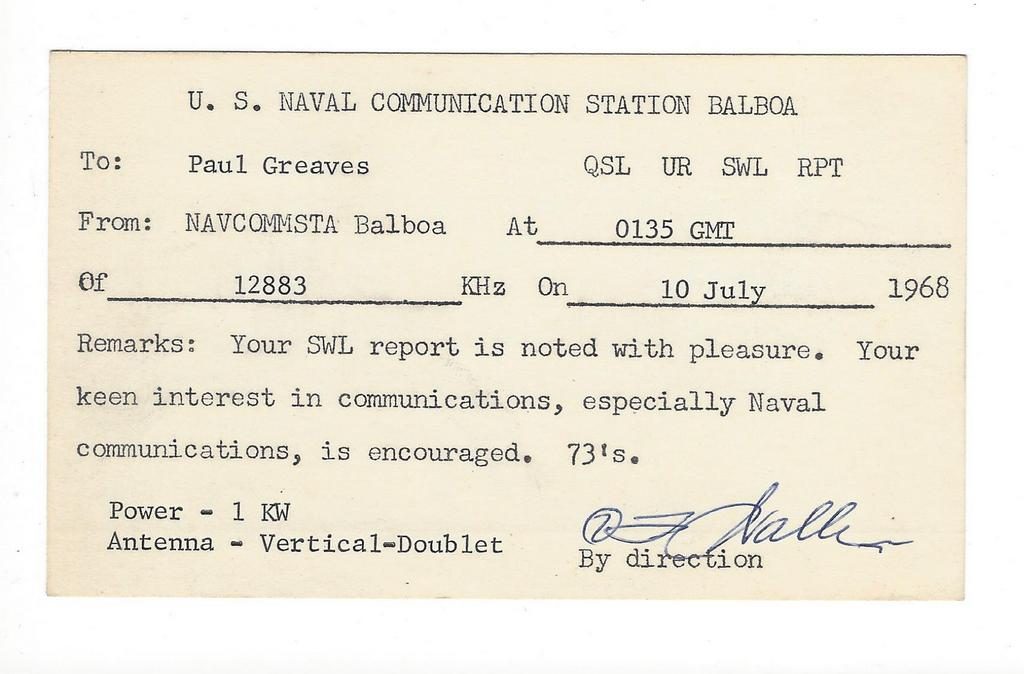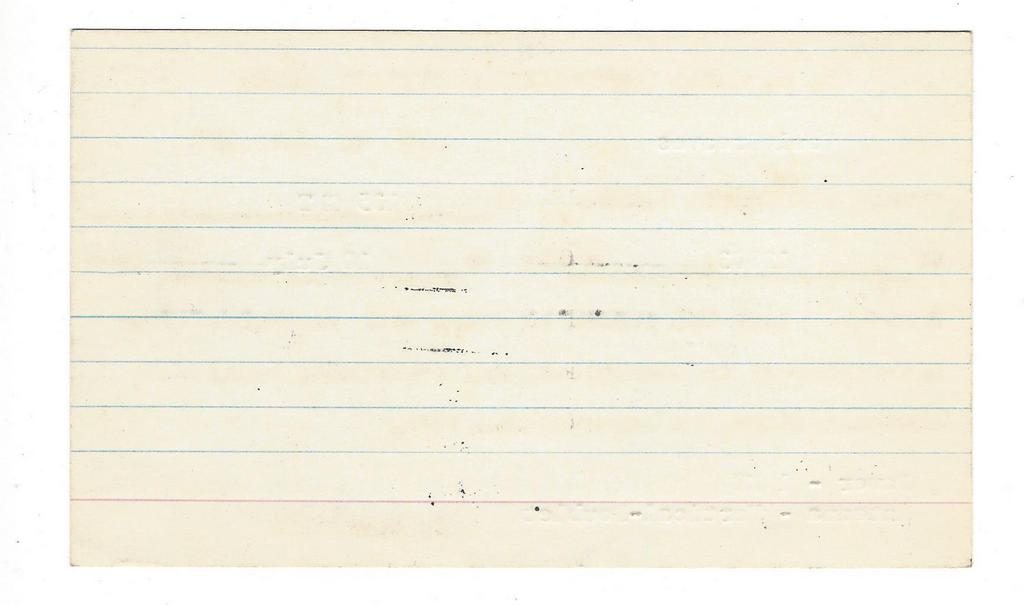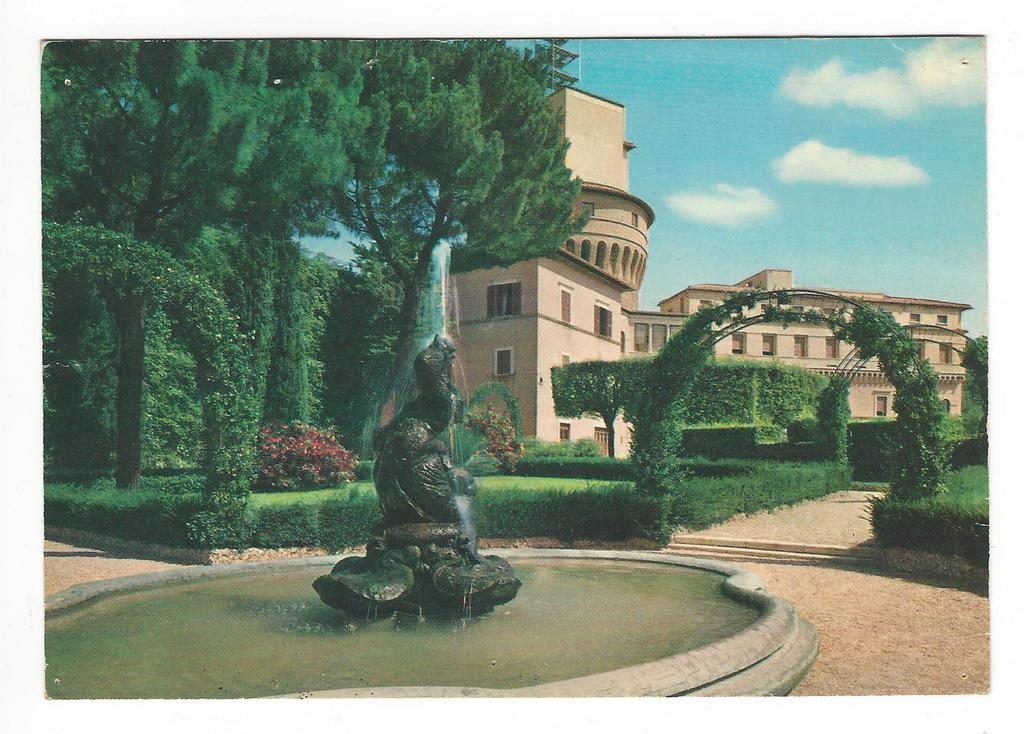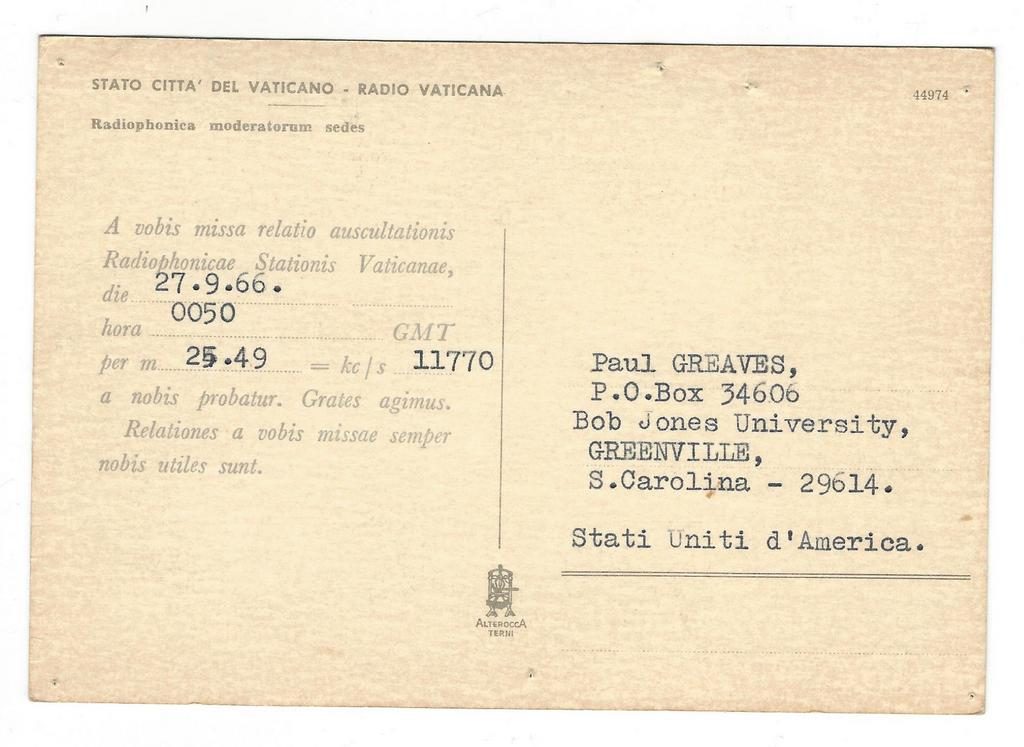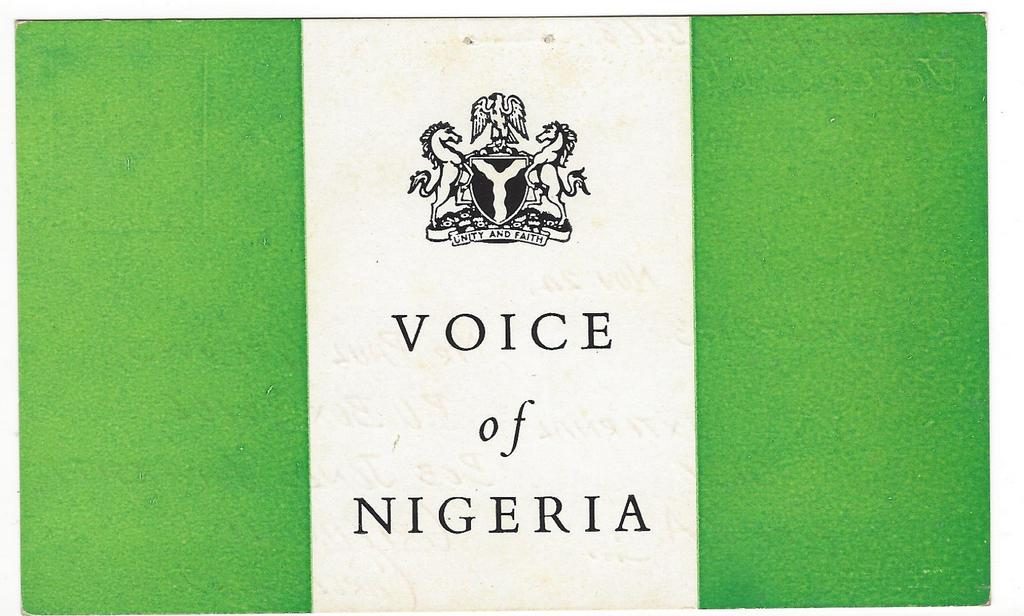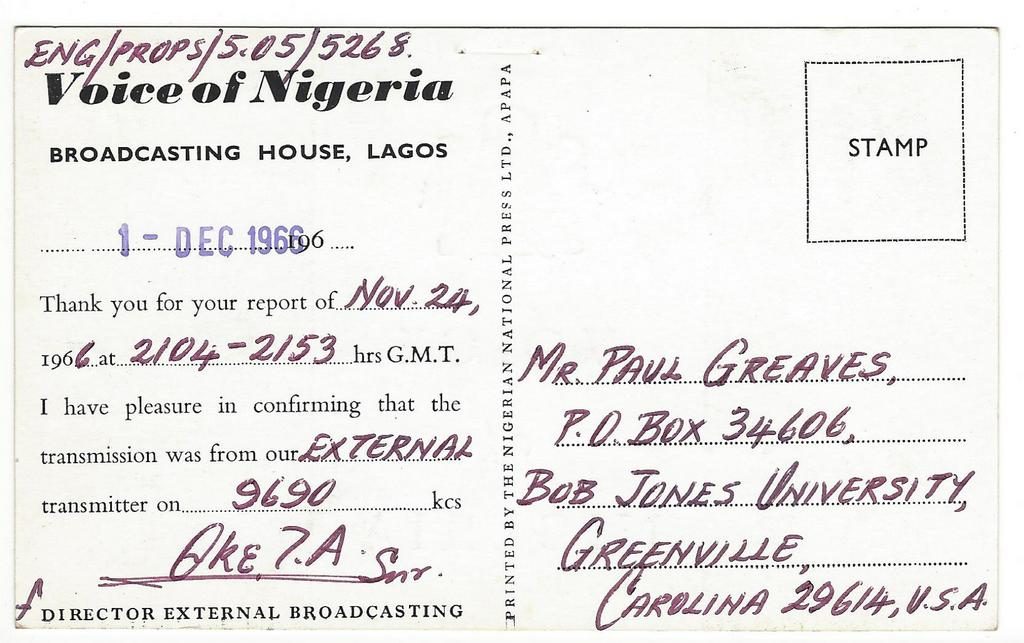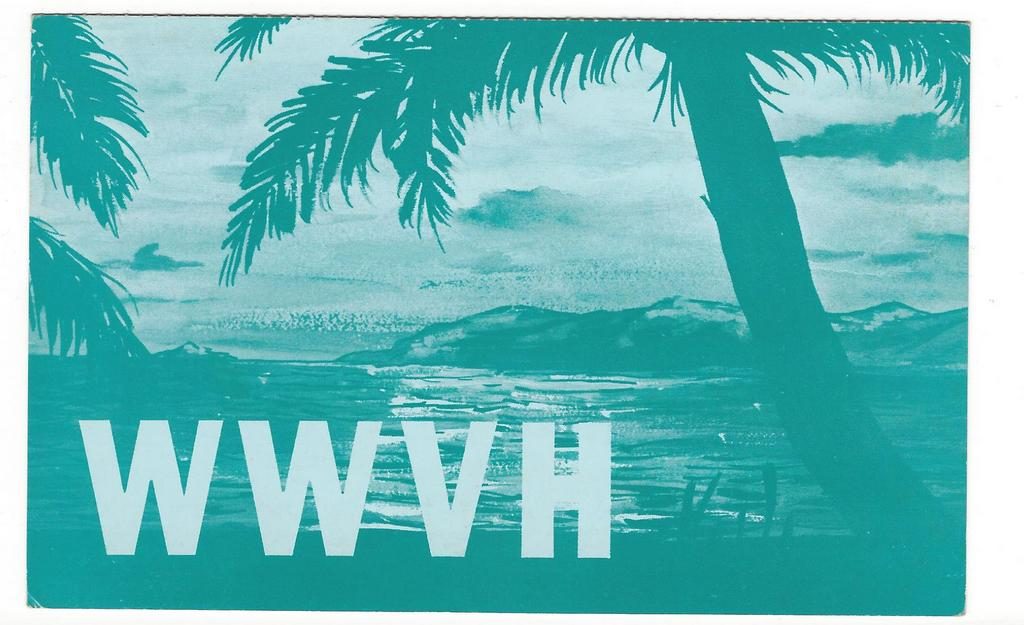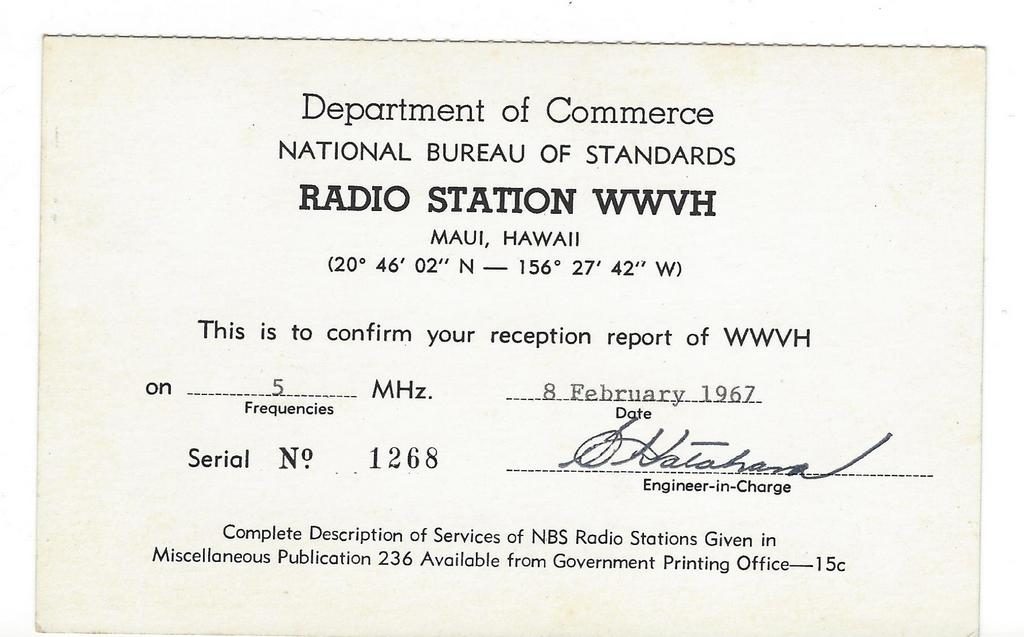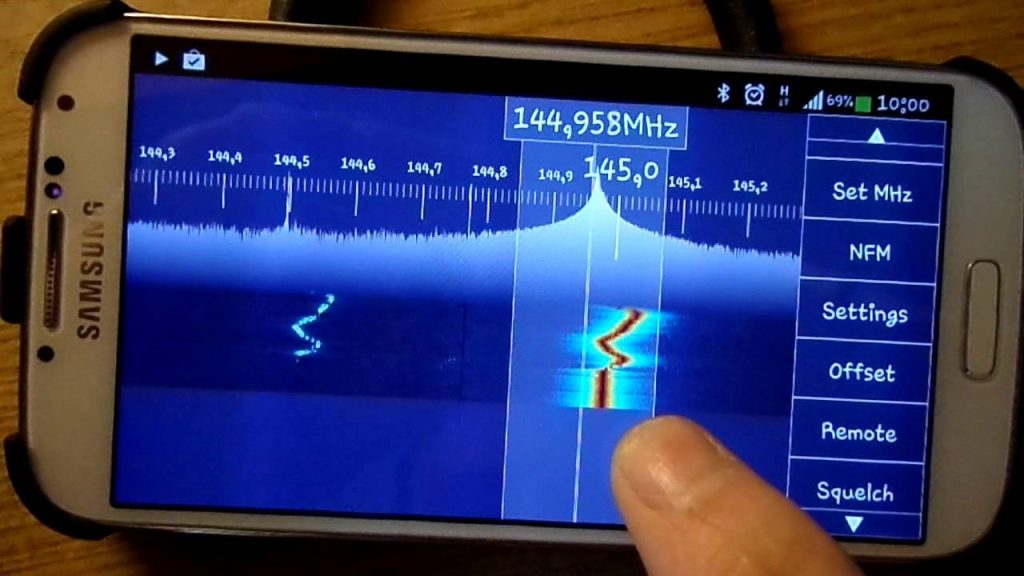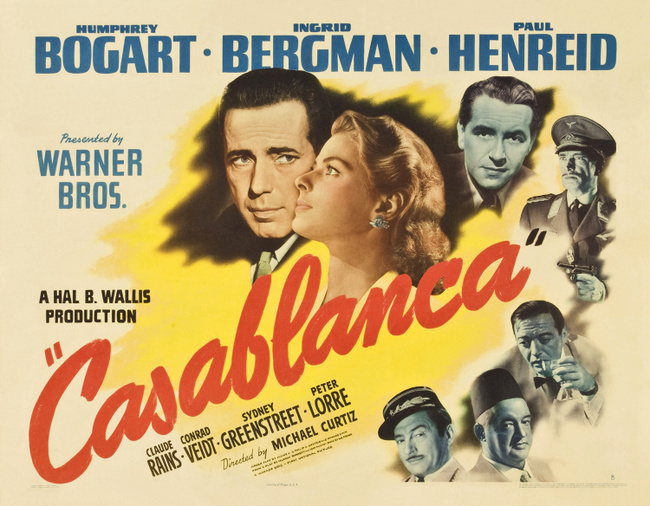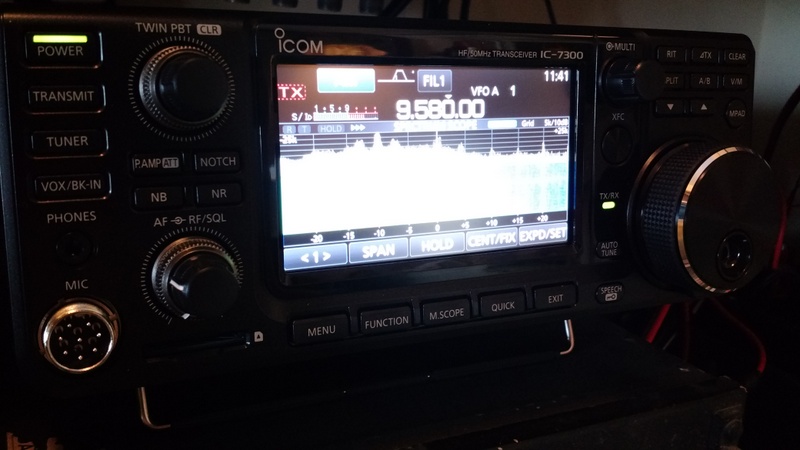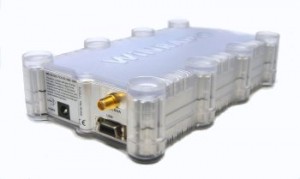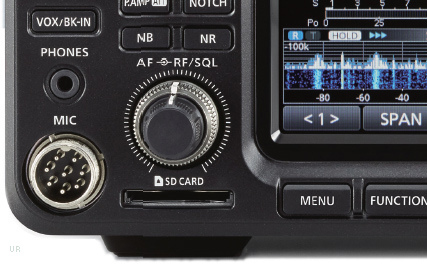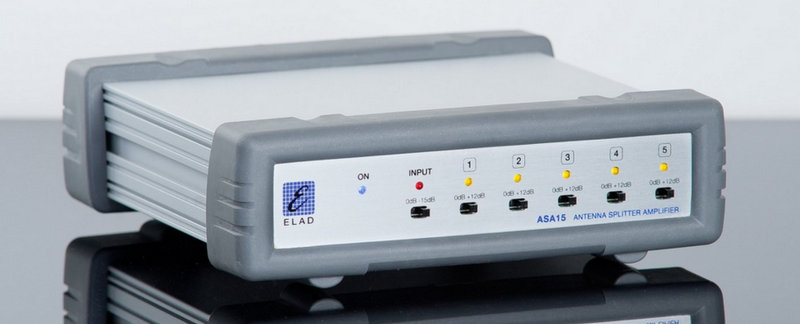Monthly Archives: April 2016
Paul’s rare and classic shortwave QSL cards
A couple months ago at my local ham radio club meeting (the NCDXCC), my buddy Paul Greaves (W4FC) mentioned that his passion for amateur radio DXing originated with shortwave broadcaster DXing. He told me:
“When I was a teen I could hardly wait to check the PO Box to see what treasures were awaiting me. After getting a QSL card many times there were many more mailings with program schedules and propaganda. I even got Chairman Mao’s little Red Book.”
Paul noted that he had quite a few SWL QSL cards, so naturally I asked if he’d share a few of his favorites with the SWLing Post. He kindly obliged.
Click on the images below to enlarge.
Wow–thank you so much for sharing these, Paul! What a beautiful QSL collection!
Post readers: If you also have some classic SWL QSL cards you’d like to share here on the SWLing Post, please contact me!
SDR Touch now supports the SDRplay RSP in Beta release
(Source: SDRplay Blog)
Good news for Android users – SDR Touch have released a beta version of their software with SDRplay RSp functionality – go to https://play.google.com/apps/testing/com.sdrtouch.sdrplay to sign up as a beta tester.
SDR Touch works on most recent Android Phone or Tablet devices.
Pirate Radio Recordings: Radio Casablanca
Last night at about 00:10 UTC, I was pleased to hear the interval signal of one of my favorite pirate radio stations: Radio Casablanca.
“Rick Blaine” fired up his AM transmitter and pumped out some amazing WWII era music on 6,940 kHz for about one hour and a half. Radio Casablanca only pops up a few times a year, so I always feel fortunate to grab the broadcast (click here to listen to previous recordings).
Signal strength varied over the course of the broadcast and the bands were quite noisy–still, the Casablanca signal punched through quite well at times.
Close your eyes and imagine what it must have been like to hear the great bands of the era over the shortwaves…
Click here to download an MP3 of the full recording, or simply listen via the embedded player below. Note that the interval signal starts around 01:25:
The Icom IC-7300 vs. WinRadio Excalibur: Which do you prefer?
[UPDATE: Read the full IC-7300 review–along with listener survey results–by clicking here.]
In the past, receiver shoot-outs in which I’ve provided sample audio for “blind” comparison––meaning, the listener does not know which audio sample is associated with which radio––have produced particularly positive feedback from Post readers.
So I’ve decided to do this for the new Icom IC-7300 transceiver. I’ve pitted the ‘7300 against a benchmark receiver: the WinRadio Excalibur.
I have a number of SDRs (software defined radios) in the shack at the moment, but I picked the Excalibur because it’s the closest in price ($900 US) to the IC-7300 ($1500) as compared to my Elad FDM-S2 ($520) or the TitanSDR Pro ($2500).
Recording notes and disclaimers
Both the WinRadio Excalibur and the Icom IC-7300 offer native digital audio recording (nice touch, Icom!). The Excalibur simply records the AF to a file on my PC’s hard drive, while the IC-7300 records the audio to an SD card which I can later transfer to my PC.
I’ve been using the Excalibur since 2012, so I’m very familiar with its recording feature. I was not, however, familiar with the IC-7300’s digital recorder, so prior to making recordings, I checked to make sure its recorded audio was a fair representation of its live audio. To my ear, the IC-7300 recorded audio was nearly identical to that of the live audio, so I used the 7300’s internal recorder rather than one of my external recorders.
Both receivers shared my large outdoor omni-directional horizontal delta loop antenna for each test.
To keep the comparison on as equal footing as possible, the receivers shared the same antenna through my Elad ASA15 antenna splitter amplifier. Though the ASA15 has both 12dB amplification and –15dB attenuation, I employed neither.
The ASA15 allowed me to make the following recordings simultaneously.
In each case, I tried to set up both radios using the same filter widths, gain, AGC settings, and (as much as possible), audio level. I didn’t engage a noise-reduction feature on either rig.
Note: the only exception to the radios’ equal treatment was in the AM mode recordings, in which I used the WinRadio’s AM Sync (AMS) mode. Why? Frankly speaking, 99% of the time during which I use the Excalibur, I do employ its AMS mode as its AM mode often sounds “hot” and over-driven when band conditions are as noisy, as they were last night.
The IC-7300 does not have AM synchronous detection (AMS mode), but I felt it compared very favorably to the Excalibur in AMS mode. The IC-7300 would have easily beat the Excalibur in this test had I only used the Excalibur’s AM mode. In the end, as a shortwave listener, the goal is to compare the total capabilities of broadcast performance between the two receivers (thus using sync mode if available, to maximize broadcast listening performance).
Please vote!
At the end of this post, I have an embedded a survey in which you can vote for the sample recordings you like best. Each recording is clearly labeled to denote that it’s either from “Radio A” or “Radio B” (I had my wife draw names from a hat to determine which radio would be labeled as A or B).
Since there are quite a few recordings, I’d suggest jotting down your notes separately before completing the survey.
Or, alternately, you can open the survey in a separate window by clicking here.
And now…here’s the recordings.
Ham Radio Band recordings
The following recordings were made on the 40 meter ham radio band yesterday evening. Both radios have the same filter width: 250 Hz in CW, 3 kHz in SSB.
Weak Signal CW (40 meter band)
Weak/Strong SSB QSO (40 meter band)
Shortwave Broadcast recordings
The following recordings were made on the 31 meter broadcast band yesterday evening. Both radios have the same filter width: 9 kHz and 8.2 kHz.
Weak Shortwave AM (Radio Bandeirantes 31 meter band)
Strong Shortwave AM (Radio Romania International, French 31 Meter Band)
Mediumwave Broadcast recordings
Note that the following mediumwave recordings were made during the morning hours (grayline). The strong station is the closest AM broadcaster to my home; it’s not a blow-torch “Class A” type station, merely the closest local broadcaster.
In the “weak” sample, I tuned to 630 kHz, where multiple broadcasters could be heard on frequency––but one was dominant.
Both radios are set to a filter width of 9.0 kHz.
Strong Mediumwave AM (1010 kHz)
Weak Mediumwave AM (630 kHz)
We want to hear from you!
Use the form below to vote for the recordings you prefer in each section.
I’ll close voting at 12:00 UTC on Thursday April 21, 2016. Thank you in advance for your participation in this survey!
Avion AV-DR-1401V firmware v1.2 now available for download
Many thanks to SWLing Post reader, Harald Kuhl, who notes that a new firmware update for the Avion AV-DR-1401 DRM receiver is now available for download via the following link:
All India Radio considering shut down of shortwave service?
(Source: Sunday Guardian Live)
AIR mulls shutting down soft power short wave units
By AREEBA FALAK
The Prasar Bharati Board is contemplating shutting down the short-wave service of the External Services Division (ESD) of All India Radio (AIR) even as a proposal to switch to an affordable internet-based radio service is still under consideration. A section of the board is keen on closing down the short wave service as an exorbitant amount is being spent to maintain the current infrastructure.
“The total budget allocated to ESD is Rs 100 crore annually. Out of this, approximately Rs 95 crore is spent on the maintenance of short wave transmitters, which includes the high cost of spare parts that are not easily available. The remaining Rs 5 crore is spent on the production of programmes in 27 languages, and to pay the salaries of the staff who are hired on a contract basis,” said a senior official in the ESD.
“One would expect to gain a large fan base after spending so much money, but this has not been the case with ESD. Since no survey has ever been done to determine the number of listeners, we cannot give an exact or even an approximate number of people who listen to AIR’s ESD channels across the world. But we know that we have a good following based on the feedback that we receive from people in countries where ESD is being listened to. Our listeners send us postcards or emails from Africa, New Zealand, Australia, Japan, etc. But the following is not in proportion to the money being spent on this service,” said the senior officer.
“The proposal suggests the shutting down of short wave and the service being made web-based. Since internet is far reaching, listening radio live on the web should not hurt our existing fan base. But of course there is the argument that short wave can reach even the remotest corners of the world, which is not the case with internet signals. The shutting down of short wave, without a doubt, will affect the propaganda value of India among its listeners abroad. This is why there are chances that the short wave service might continue in neighboring countries like China, Nepal, etc. Also, India’s edge in a continent like Africa will suffer a blow if the short-wave is to be shut down,” said sources in AIR.
[…]At present, ESD broadcasts 57 transmissions daily, with almost 72 hours covering over 108 countries in 27 languages, out of which 15 are foreign and 12 are Indian. The Indian languages are Bengali, Gujarati, Hindi, Kannada, Malayalam, Nepali, Punjabi, Saraiki, Sindhi, Tamil, Telugu and Urdu. The foreign languages are Arabic, Balochi, Burmese, Chinese, Dari, French, Indonesian, Persian, Pushtu, Russian, Sinhala, Swahili, Thai, Tibetan and English (General Overseas Service).
Read the full news item on the Sunday Guardian Live website…

